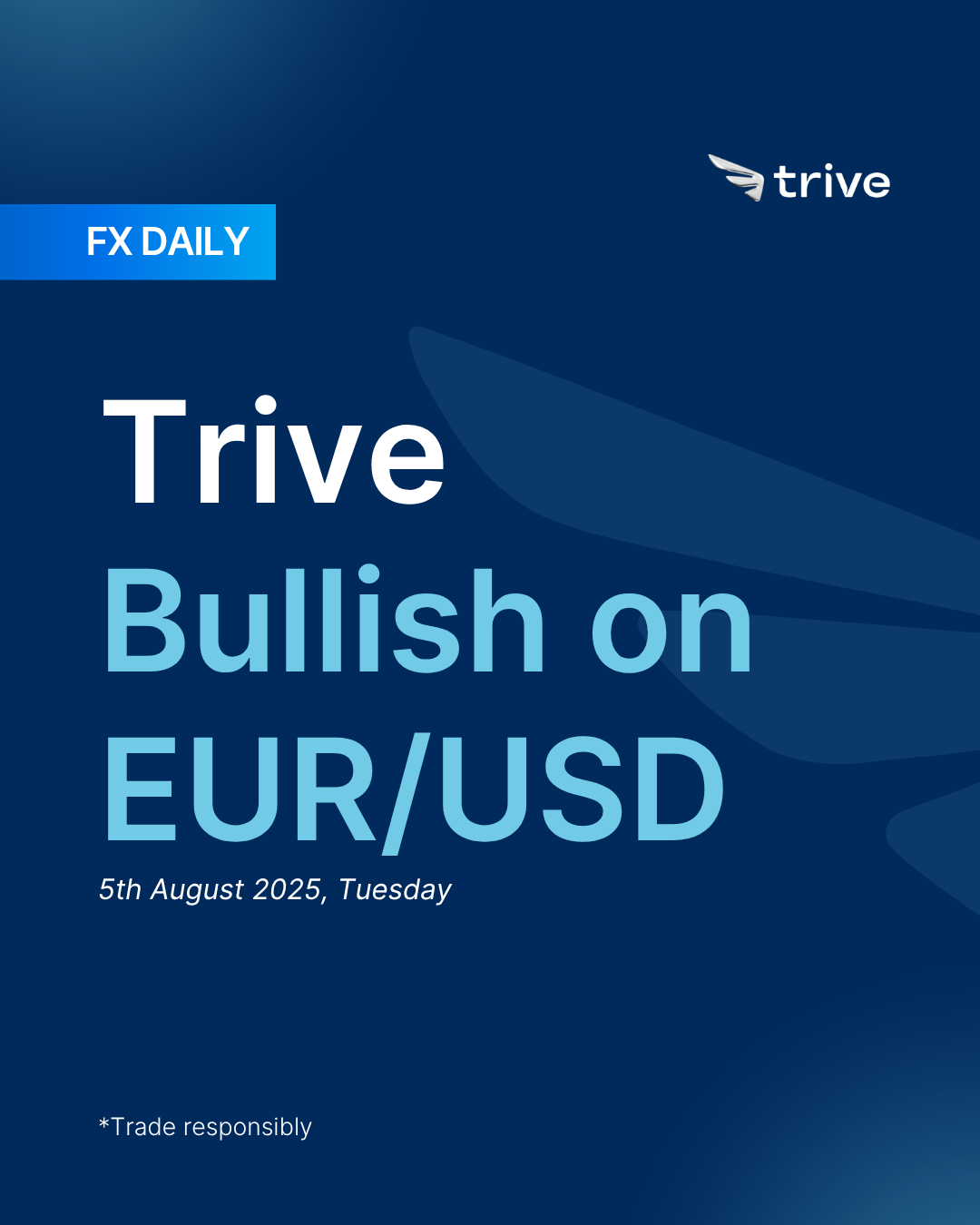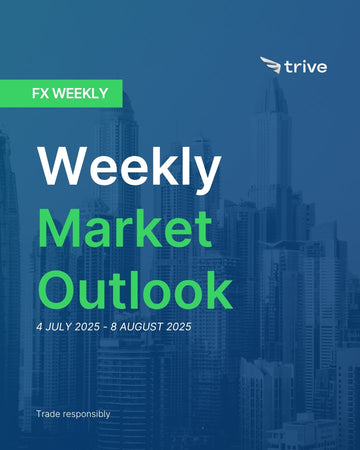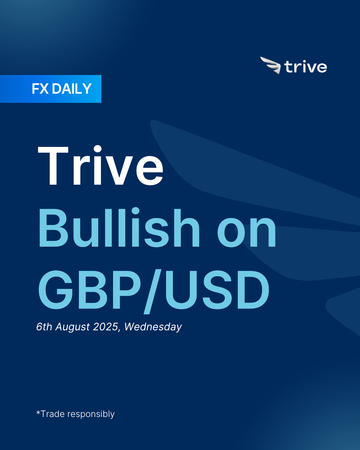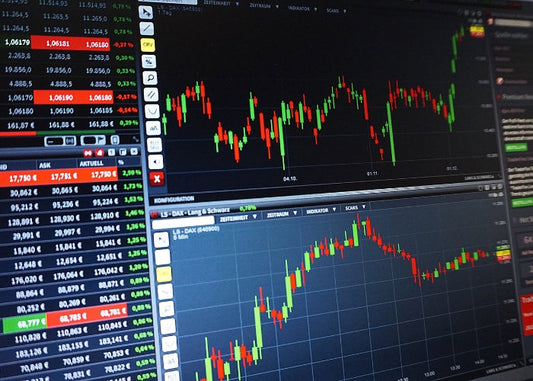FX Daily: Trive Bullish on EUR/USD

EUR/USD turned bullish after a weak US jobs report triggered a sharp Dollar selloff and boosted Fed rate cut bets. Meanwhile, sticky Eurozone inflation and cautious ECB signals reduced expectations for further easing. With the policy gap narrowing, EUR/USD is supported for further upside despite trade tensions and slow EU growth.
EUR: Liquid currency
The Euro experienced a turbulent week, driven by shifting transatlantic trade dynamics and a sudden reversal in the US economic outlook. The currency began under heavy pressure, with EUR/USD falling sharply below 1.1700 and nearing 1.1400. This move was sparked by a “buy the rumor, sell the fact” reaction to the US-EU trade agreement. Although the 15% tariff avoided a more severe 30% scenario, it was still seen as a significant hit to the Eurozone economy, a view reflected in harsh criticism from German and French officials. Hawkish comments from ECB policymakers were largely ignored, as concerns over economic growth and a rising US Dollar took center stage.
Everything changed on Friday after the US released a disappointing jobs report. The resulting plunge in the Dollar sent EUR/USD soaring back towards 1.1600, erasing the week’s losses within hours. This sharp move was reinforced by stronger-than-expected inflation data from the Eurozone, marking a week where the Euro’s rebound was less about its own strength and more about a dramatic shift in US monetary policy expectations.
On the economic front, Friday’s July Flash HICP report showed headline inflation holding steady at the ECB’s 2.0% target, slightly above expectations. Core inflation also came in stronger than forecast, pointing to ongoing price pressures. The Q2 GDP release on Wednesday showed the Eurozone growing just 0.1% quarter-over-quarter, slower than Q1’s 0.6% but still better than the 0.0% forecast. There were stark differences among countries, with Germany shrinking by 0.1% while France and Spain showed modest growth. However, the data was seen as outdated given the new trade developments. Germany’s preliminary CPI remained steady at 2.0% year-over-year, highlighting sticky inflation even as the economy contracts. Meanwhile, manufacturing PMIs stabilized, with the final reading for July at 49.8. Italy and Spain posted small improvements, but the index remained below the 50.0 mark that separates growth from contraction.
From a policy perspective, several ECB officials made comments suggesting a more cautious approach to further easing. Kazimir stated there was no reason to act in September, and Makhlouf noted the ECB could afford to “wait and see.” However, these hawkish signals had little impact as markets were more focused on the potential economic damage from US tariffs. Some major banks, including Deutsche Bank and Barclays, responded to the inflation data by scrapping their forecasts for a September rate cut. Still, expectations for ECB moves were heavily influenced by developments in the US. Before the jobs report, markets priced in less than a 50% chance of another 25 basis point ECB cut by year-end, a view that shifted only slightly after Friday’s events.
The main driver of early-week Euro weakness was the new US-EU trade agreement, which imposed a 15% tariff on most EU goods, including autos. While this avoided a worse outcome, the deal sparked strong political opposition. German Chancellor Merz warned it would place an “enormous burden” on the economy, and French President Macron criticized it as “unbalanced,” claiming the EU was “not feared enough” in talks. The week ended with President Trump officially enacting the new tariffs, including a surprise 39% rate on Swiss exports, highlighting the ongoing risk of US protectionism to global and European growth.
Market sentiment shifted dramatically over the week. Initially, it was shaped by fears about the economic consequences of the trade deal, which pushed the Euro lower. But Friday’s US jobs report changed everything. The resulting Dollar collapse lifted all major currencies, with the Euro benefiting most as traders rushed to price in US rate cuts. The rally wasn’t driven by a positive outlook on the Euro itself, but rather by its position as the main alternative to the Dollar.
As of Sunday, the markets assign an 86.8% probability to holding rates steady and a 13.2% probability to a 25‐bps rate cut by the ECB at its September 11th meeting. The interest rate path is slightly higher compared to last week, and the markets are pricing in 38‐bps of rate cuts over the next five meetings.
The US-EU trade deal wasn’t great, but it doesn’t fundamentally change the outlook for the Euro. Markets had priced in a more damaging tariff scenario, and the fact that it was limited to 15% helped avoid a deeper shock. Yes, a 15% tariff is far from ideal, but markets had braced for worse, and avoiding the more aggressive 30% scenario likely prevented deeper economic disruption in the Eurozone. The initial reaction was driven by emotion and positioning, not a fundamental reassessment of the Euro’s trajectory. What really shifted the picture was the US jobs report, which triggered a sharp Dollar selloff and forced a rethink on Fed policy.
That shift alone makes the Euro more attractive in relative terms, especially as ECB officials push back against the idea of more rate cuts. Inflation in the Eurozone is proving stickier than expected, with core and headline figures holding near the 2% target, which supports the case for policy stability. Economic growth may be slow, but it’s not collapsing, and with manufacturing PMIs stabilizing, the worst could be behind. All in all, our baseline bias remains weak bullish on the Euro.
USD: Rate cut boost
The US Dollar had a rollercoaster week, beginning with strong gains driven by a confident economic outlook and hawkish Fed messaging, only to see that momentum collapse after a disastrous jobs report on Friday. The DXY surged early in the week, breaking above 99.00 as markets responded positively to a US-EU trade deal that was framed as a victory for the US. That bullish tone picked up mid-week after a strong Q2 GDP reading of 3.0% and a hawkish press conference from Fed Chair Powell, who emphasized the Fed’s willingness to act against inflation risks from tariffs. This pushed the Dollar above the 100.00 mark as traders rapidly scaled back expectations for rate cuts.
The mood changed entirely on Friday when the July Non-Farm Payrolls report shocked the market. The headline number came in far below expectations at just 73,000, and revisions to the previous two months were brutal, wiping out a combined 258,000 jobs. The three-month average dropped to only 35,000, signaling a labor market close to stalling. While the unemployment rate rose slightly to 4.2%, wages held firm at 3.9% year-over-year, but this did little to offset the negative surprise. The Dollar dropped sharply, falling back below 99.00, as markets quickly repriced for a September rate cut, ending the week with a dramatic pivot from hawkishness to renewed easing fears.
The strong mid-week momentum was built on a string of supportive data. Alongside the hot GDP print, the ADP employment report beat expectations at 104,000. Core PCE for Q2 came in at 2.5%, slightly above forecast. However, Friday added to the bearish shift as ISM Manufacturing PMI fell to 48.0—below the 50.0 mark that indicates contraction—and its employment sub-index plunged to 43.4. Earlier in the week, other figures showed jobless claims holding low at 218,000, while JOLTS Job Openings and Consumer Confidence offered a mixed but generally stable view of the labor market and consumer sentiment.
Policy-wise, Powell’s press conference was a major turning point. Following an FOMC decision to keep rates unchanged, Powell rejected the idea of a preemptive September cut and said the Fed would prevent tariff-driven price increases from evolving into more serious inflation. Markets took this as a warning that hikes weren’t off the table, which triggered a hawkish repricing. Traders reduced expected cuts for 2025 to just 36 basis points. But after the NFP report, those bets flipped entirely. By Friday, odds of a September cut jumped above 90%, and nearly 60 basis points of easing were priced in by year-end. Comments from dovish Fed members Waller and Bowman, who had dissented in favor of cuts, were also vindicated by the labor data.
President Trump added further pressure by sharply criticizing Powell after the NFP report, calling him a “stubborn MORON” and urging the Fed to cut rates immediately. His attack on the central bank added to the sense of urgency in the market’s response.
Geopolitical tensions also played a role. The week ended with the US imposing sweeping new tariffs on 92 countries, including 35% on Canada and 39% on Switzerland. This raised the average US tariff rate to 15.2%, a steep rise from 2.3% pre-Trump, and worsened global risk sentiment. While the EU-US trade deal was initially welcomed, it was later criticized by European leaders for being unfair, which weighed on confidence. Trade talks between the US and China continued in Stockholm but ended the week without any concrete progress. Meanwhile, tensions with Russia escalated, with Trump issuing threats of secondary sanctions and repositioning nuclear submarines in response to Russia’s rhetoric.
Market sentiment shifted dramatically from optimism about US economic strength to growing fears of a slowdown. The strong start of the week was fueled by upbeat data and a confident Fed. But Friday’s job report and the introduction of broad new tariffs erased that narrative, leading to a risk-off tone. US equities sold off, Treasury yields dropped, and the Dollar tumbled as markets braced for a weaker outlook and likely Fed easing ahead.
As of Sunday, the markets assign a 73% probability to a 25‐bps rate cut and a 27% probability that the Fed will hold rates steady at its September 17th meeting. The interest rate path is considerably lower than last week, and the markets are pricing in 80‐bps of rate cuts over the next five meetings.
In our view, the sharp reversal in the US Dollar last week marks a clear shift in sentiment. After a strong start to the week driven by upbeat data and hawkish Fed rhetoric, the tone completely changed with the July jobs report. The headline NFP miss was bad enough on its own, but the large downward revisions to previous months made it even harder to ignore. To us, it looks like the labor market is losing momentum faster than the Fed anticipated.
Because of that, we now see a September rate cut as the most likely outcome. The Fed had been trying to hold a more cautious tone, especially after Powell’s comments earlier in the week pushing back against rate cuts. But the data doesn’t support that stance anymore, and rate cut expectations have flipped aggressively, and we’re now looking at nearly 60bps of easing priced in by the end of the year.
We don’t believe the US economy is falling off a cliff. Wage growth is still decent, and there’s no sign of a major demand shock. But with job creation slowing and the unemployment rate edging up, the Fed has enough justification to ease in September, especially with ongoing geopolitical risks and rising tariffs starting to bite.
We’re sticking to our bearish baseline bias from last week.
 EUR/USD 4H
EUR/USD 4H
Disclaimer
This material is provided for informational purposes only and does not constitute financial, investment, or other advice. The opinions expressed in this material are those of the author and do not necessarily reflect the views of Trive International. No opinion contained in this material constitutes a recommendation by Trive International or its author regarding any particular investment, transaction, or investment strategy. This material should not be relied upon in making any investment decision.
The information provided does not consider the individual investment objectives, financial situation, or needs of any specific investor. Investors should seek independent financial advice tailored to their individual circumstances before making any investment decisions. Trive International shall not be liable for any loss, damage, or injury arising directly or indirectly from the use of this information or from any action or decision taken as a result of using this material.
Trive International may or may not have a financial interest in the companies or securities mentioned. The value of investments may fluctuate, and investors may not get back the amount they originally invested. Past performance is not indicative of future results.
For more information about Trive International, please visit http://trive.com/int
Additional Information
Investing involves risk, including the potential loss of principal. Diversification and asset allocation strategies do not ensure a profit or guarantee against loss. The content in this material is subject to change without notice and may become outdated or inaccurate over time. Trive International does not undertake any obligation to update the information in this material.
By accessing this material, you acknowledge and agree to the terms of this disclaimer. If you do not agree with these terms, please refrain from using this information.
कोई टिप्पणी नहीं
Home
Trive
TriveHub





0 टिप्पणियाँ